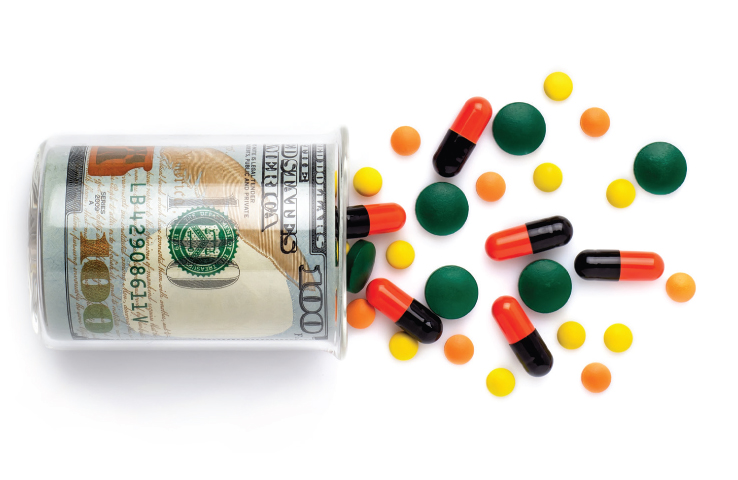“There is no disputing the fact that Americans pay 30-300% more for the same prescription drugs as our counterparts in Canada, Europe, and the rest of the comparable industrialized world.”
—Mike Simpson (R-Idaho)

I consider myself to be above average in intelligence and certainly very capable at “figuring things out” given sufficient background information. This subject has been explained and illustrated several times, in a variety of settings, while I was present. But to be frank, I still don’t quite understand how drugs end up being priced in the United States. Representative Simpson (quoted above) wasn’t quite accurate or detailed enough, but he got the essential point right.
Let’s put the subject into stark perspective. According to a January 28, 2021, report issued by the non-profit, non-partisan Rand Corporation, using 2018 data (the newest reliable data available), prescription drug prices in the US are overall 256% higher than those in 32 comparable advanced, industrialized countries. These 32 countries were the 2018 member nations of the Organization for Economic Co-operation and Development (OECD). But this data needs to be understood in a nuanced manner. Although branded prescription drug prices were an astonishing 344% higher, non-branded generic drug prices were actually 16% lower in the US. And then there’s the issue of what “price” should be utilized in any such effort at comparison. The basic gross or “list price” determined by the pharmaceutical house? Or the Average Wholesale Price (AWP), which accounts for some discounts and rebates? Or the “net price,” which is the actual price paid by patients? Interestingly, using some logical and reasonable assumptions, when estimating the “net price” of drugs in the US and the OECD comparator countries, we are still paying about 190% higher prices. (See the full report at https://www.rand.org/pubs/research_reports/RR2956.html.)
But let’s get back to those higher prices, no matter how you approach the subject. What factors go into the price my patient has to pay? I understand some out-of-pocket costs are really low under the 340B Drug Pricing Program, due to negotiated and mandated discounts to government payers and under company-sponsored patient assistance and copayment support programs. But then, every site and every author trying to explain drug pricing also mentions these: rebates to commercial insurance payers, administration fees to pharmacy benefit managers, fees and discounts to other pharmaceutical channel participants, and fees and discounts to pharmacies. In other words, there’s a lot of money changing hands among various middlemen that help maintain the continued high price of drugs in this country, as evidenced by the Rand report.
But does this complex and irrational pricing structure and the resultant high price of prescription agents really matter?
According to a February 2019 Henry J. Kaiser Family Foundation report, 24% of Americans currently have significant difficulty paying for their own or their children’s medications. This is especially true among those who have a family income of less than $90,000 and whose family unit consumes multiple medications. So where does that put high-priced dermatological drugs in perspective? I suspect, lower on the priority list than, let’s say drugs for Dad’s diabetes or Mom’s migraines!
And let’s recognize that many of our current and future medical advances will be branded prescription drugs who enjoy both patent and—often—exclusivity protection. This means that they will remain in a position to be way more expensive in the US than elsewhere for an extended period of time. While it is true that pharmaceutical companies often try to “help out” by offering discount cards or free starter programs, those are simply other perversions to the already complicated drug access pathway. For example, those cards get lost, they expire, or are determined to be “not applicable” at the retail pharmacy level. At best, such efforts are like band-aids on a gaping wound.
From an extremely basic level, all I know is this: We have had an explosion of new drugs for acne and psoriasis, and a host of new drugs—revolutionary in nature—in the pipeline for atopic dermatitis, vitiligo, hidradenitis, and alopecia areata. We appear to be getting closer to effective drugs for heretofore difficult-to-manage disorders such as systemic sclerosis. But how many of those wonderful innovations will I actually be able to seamlessly and swiftly put in my patients’ hands without extraordinarily time-consuming effort?
Don’t get me wrong. I believe that Big Pharma deserves to be profitable. I want them to continue to innovate and reasonable profit margins make that possible. But what is the point of developing drugs that, due to an unholy alliance of multiple middlemen in the medication procurement chain, dictate American drug prices that are hundreds of percent higher than elsewhere? I am frustrated knowing that many of my patients may never benefit from the magnificent research and development efforts going on even as you read this. The existing system must be torn down and entirely rebuilt in a manner that ensures patients can receive the drugs that you and I know are the best ones to cure and/or control dermatological disease.



